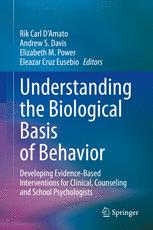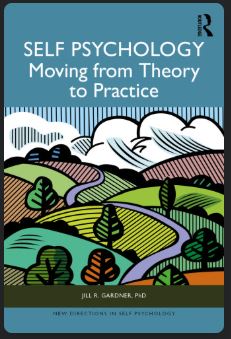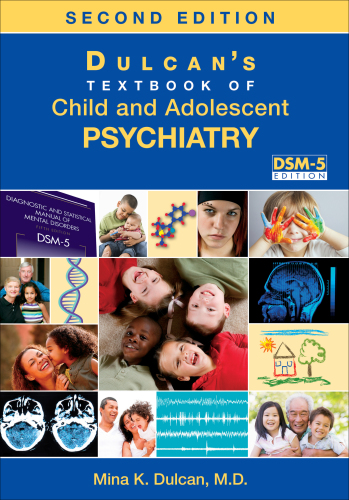Most practicing psychologists know the famous case of Phineas Gage, the man who survived the metal rod and was arguably one of the first neuroscience cases (Larner & Leach, 2002). Phineas was a railroad worker, and an explosion thrusted a metal rod through his skull destroying most of his frontal lobe. Detailed accounts showed that after the rod pierced his skull, he was talking and aware of his sur- roundings in only a few minutes. Early on, practitioners believed that any significant damage to the brain would cause complete dysfunction in the individual such as resulting in a irreparable brain damage and total dysfunction (D’Amato & Hartlage, 2008). What happened in the nineteenth century helped to clarify that there are dis- tinct structures with unique functions in the human brain. Moreover, this case dem- onstrated that the brain has a significant impact on each individual’s personality; in the example of Mr. Gage’s, he experienced a serious personality shift from a com- petent adult to an erratic and often angry man. This case example was one of many such studies that have demonstrated the impact of localized brain injuries on human behavior (Dean & Reynolds, 1997; Pankseep & Biven, 2012). Today we understand the brain more than ever and can apply treatment to a localized injury area. Neuropsychological practices can be implemented in the assessment and diagnosis of patients, as well as to determine the most effective treatment for patients. The American Psychological Association (APA), the largest group of psychologists in the world, oversees professional development, training, and credentialing with model licensure acts and professional associations found in every state encompass- ing the diverse field of psychology. The APA is organized according to more than 50 divisions that relate to specialty areas with Division 40 labeled as the Society for Clinical Neuropsychology which is most related to this text. Other professional associations such as the National Academy of Neuropsychology, the International Neuropsychological Society, and the American Board of Professional Psychology also are leading organizations which help to define, articulate, and advocate for understanding and training related to our biological basis of behavior, affective, social, and cognitive functioning. Through a neuropsychological perspective, researchers and clinicians alike can use what neuropsychology has to offer by devel- oping treatments based on patient cognitive strengths and weaknesses to implement treatments that best match the cognitive capabilities of those patients (Power & D’Amato, 2018).
چکیده فارسی
اکثر روانشناسان شاغل مورد معروف فینیاس گیج را می شناسند، مردی که از میله فلزی جان سالم به در برد و مسلماً یکی از اولین موارد علوم اعصاب بود (لارنر و لیچ، 2002). فینیاس یک کارگر راهآهن بود و یک انفجار میلهای فلزی را در جمجمهاش فرو برد و قسمتهای زیادی از لوب پیشانی او را از بین برد. گزارش های دقیق نشان می داد که پس از سوراخ شدن میله جمجمه او، او تنها در چند دقیقه صحبت می کرد و از اطراف خود آگاه بود. در اوایل، پزشکان بر این باور بودند که هر آسیب قابل توجهی به مغز منجر به اختلال عملکرد کامل در فرد می شود، مانند آسیب غیرقابل جبران مغزی و اختلال عملکرد کامل (D'Amato & Hartlage، 2008). آنچه در قرن نوزدهم اتفاق افتاد کمک کرد تا روشن شود که ساختارهای متمایز با عملکردهای منحصر به فرد در مغز انسان وجود دارد. علاوه بر این، این مورد نشان داد که مغز تأثیر قابل توجهی بر شخصیت هر فرد دارد. در مثال آقای گیج، او تغییر شخصیتی جدی را از یک بزرگسال توانا به یک مرد نامنظم و اغلب عصبانی تجربه کرد. این نمونه موردی یکی از بسیاری از این مطالعات بود که تأثیر آسیب های مغزی موضعی را بر رفتار انسان نشان داده است (دین و رینولدز، 1997؛ پانکسیپ و بیون، 2012). امروزه ما بیشتر از هر زمان دیگری مغز را درک می کنیم و می توانیم درمان را برای ناحیه آسیب موضعی اعمال کنیم. روشهای عصبروانشناختی را میتوان در ارزیابی و تشخیص بیماران و همچنین تعیین مؤثرترین درمان برای بیماران به کار برد. انجمن روانشناسی آمریکا (APA)، بزرگترین گروه روانشناسان در جهان، بر توسعه حرفهای، آموزش و تأیید اعتبار با مدلهای مجوز و انجمنهای حرفهای که در هر ایالتی که حوزههای متنوع روانشناسی را در بر میگیرد، نظارت میکند. APA بر اساس بیش از 50 بخش سازماندهی شده است که به حوزه های تخصصی مربوط می شود و بخش 40 با عنوان انجمن عصب روانشناسی بالینی که بیشترین ارتباط را با این متن دارد، سازماندهی شده است. سایر انجمنهای حرفهای مانند آکادمی ملی روانشناسی اعصاب، انجمن بینالمللی عصبروانشناسی، و هیئت روانشناسی حرفهای آمریکا نیز سازمانهایی پیشرو هستند که به تعریف، بیان و حمایت از درک و آموزش مرتبط با مبنای بیولوژیکی رفتار، عاطفی، کمک میکنند. عملکرد اجتماعی و شناختی از طریق دیدگاه عصب روانشناختی، محققان و پزشکان به طور یکسان میتوانند از آنچه عصبروانشناسی ارائه میکند با توسعه درمانهایی بر اساس نقاط قوت و ضعف شناختی بیمار برای اجرای درمانهایی که به بهترین وجه با قابلیتهای شناختی آن بیماران منطبق است، استفاده کنند (Power & D'Amato, 2018).
ادامه ...
بستن ...
Most practicing psychologists know the famous case of Phineas Gage, the man who survived the metal rod and was arguably one of the first neuroscience cases (Larner & Leach, 2002). Phineas was a railroad worker, and an explosion thrusted a metal rod through his skull destroying most of his frontal lobe. Detailed accounts showed that after the rod pierced his skull, he was talking and aware of his sur- roundings in only a few minutes. Early on, practitioners believed that any significant damage to the brain would cause complete dysfunction in the individual such as resulting in a irreparable brain damage and total dysfunction (D’Amato & Hartlage, 2008). What happened in the nineteenth century helped to clarify that there are dis- tinct structures with unique functions in the human brain. Moreover, this case dem- onstrated that the brain has a significant impact on each individual’s personality; in the example of Mr. Gage’s, he experienced a serious personality shift from a com- petent adult to an erratic and often angry man. This case example was one of many such studies that have demonstrated the impact of localized brain injuries on human behavior (Dean & Reynolds, 1997; Pankseep & Biven, 2012). Today we understand the brain more than ever and can apply treatment to a localized injury area. Neuropsychological practices can be implemented in the assessment and diagnosis of patients, as well as to determine the most effective treatment for patients. The American Psychological Association (APA), the largest group of psychologists in the world, oversees professional development, training, and credentialing with model licensure acts and professional associations found in every state encompass- ing the diverse field of psychology. The APA is organized according to more than 50 divisions that relate to specialty areas with Division 40 labeled as the Society for Clinical Neuropsychology which is most related to this text. Other professional associations such as the National Academy of Neuropsychology, the International Neuropsychological Society, and the American Board of Professional Psychology also are leading organizations which help to define, articulate, and advocate for understanding and training related to our biological basis of behavior, affective, social, and cognitive functioning. Through a neuropsychological perspective, researchers and clinicians alike can use what neuropsychology has to offer by devel- oping treatments based on patient cognitive strengths and weaknesses to implement treatments that best match the cognitive capabilities of those patients (Power & D’Amato, 2018).
ادامه ...
بستن ...










